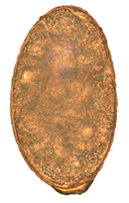|
Troglotrematidae
Troglotrematidae is a family of trematodes belonging to the order Plagiorchiida. Genera: * '' Beaveria'' Lee, 1965 * '' Macroorchis'' Goto, 1919 * '' Nanophyetus'' Chapin, 1927 * '' Nephrotrema'' Baer, 1931 * '' Pseudotroglotrema'' Yamaguti, 1971 * '' Sellacotyle'' Wallace, 1935 * '' Skrjabinophyetus'' Dimitrova & Genov, 1967 * '' Troglotrema'' Odhner, 1914 * '' Xiphidiotrema'' Senger, 1953 References {{Taxonbar, from=Q2498132 Platyhelminthes ... [...More Info...] [...Related Items...] OR: [Wikipedia] [Google] [Baidu] |
Trematodes
Trematoda is a class of flatworms known as flukes. They are obligate internal parasites with a complex life cycle requiring at least two hosts. The intermediate host, in which asexual reproduction occurs, is usually a snail. The definitive host, where the flukes sexually reproduce, is a vertebrate. Infection by trematodes can cause disease in all five traditional vertebrate classes: mammals, birds, amphibians, reptiles, and fish. Etymology Trematodes are commonly referred to as flukes. This term can be traced back to the Old English name for flounder, and refers to the flattened, rhomboidal shape of the organisms. Taxonomy There are 18,000 to 24,000 known species of trematodes, divided into two subclasses — the Aspidogastrea and the Digenea. Aspidogastrea is the smaller subclass, comprising 61 species. These flukes mainly infect bivalves and bony fishes.https://www.biotaxa.org/Zootaxa/article/view/zootaxa.3918.3.2 Digenea — which comprise the majority of trematodes — ... [...More Info...] [...Related Items...] OR: [Wikipedia] [Google] [Baidu] |
Plagiorchiida
Plagiorchiida is a large order of trematodes, synonymous to Echinostomida. They belong to the Digenea, a large subclass of flukes. This order contains relatively few significant parasites of humans. The following families are placed here, organised by superfamily and suborder:Jones, A., Bray, R. A., & Gibson, D. I. (Eds.). (2002). ''Keys to the Trematoda'' (Vol. 1). CABI Publishing and The Natural History Museum. * Apocreadiata ** Apocreadioidea Skrjabin, 1942 *** Apocreadiidae Skrjabin, 1942 * Bivesiculata ** Bivesiculoidea *** Bivesiculidae Yamaguti, 1934 * Bucephalata ** Bucephaloidea Poche, 1907 *** Bucephalidae Poche, 1907 *** Nuitrematidae Kurochkin, 1975 * Echinostomata ** Echinostomatoidea Looss, 1902 *** Caballerotrematidae Tkach, Kudlai & Kostadinova, 2016 *** Calycodidae Dollfus, 1929 *** Cyclocoelidae Stossich, 1902 *** Echinochasmidae Odhner, 1910 *** Echinostomatidae Looss, 1899 *** Fasciolidae Railliet, 1895 *** Himasthlidae Odhner, 1910 *** Philophthalm ... [...More Info...] [...Related Items...] OR: [Wikipedia] [Google] [Baidu] |
Nanophyetus
''Nanophyetus salmincola'' is a food-borne intestinal trematode parasite prevalent on the Pacific Northwest coast. The species may be the most common trematode endemic to the United States. The life cycle of the ''N. salmincola'' requires three hosts. The first intermediate host is an ''Juga plicifera'' stream snail. The second intermediate host is a salmonid fish, though some non-salmonid fishes also play a role. Lastly, the definitive host is most commonly a canid, though many other mammals are also definitive hosts, including humans. Transmission of ''N. salmincola'' to the definitive host occurs upon ingestion of parasite-infected fish. The parasite is most known for its association with "salmon poisoning disease", which, left untreated, is fatal to dogs and other canids. However, canids are affected by the ''Neorickettsia helminthoeca'' bacteria, for which ''N. salmincola'' acts as a vector, and not by the parasite itself. Very few known cases of naturally acquir ... [...More Info...] [...Related Items...] OR: [Wikipedia] [Google] [Baidu] |

